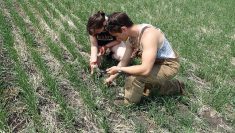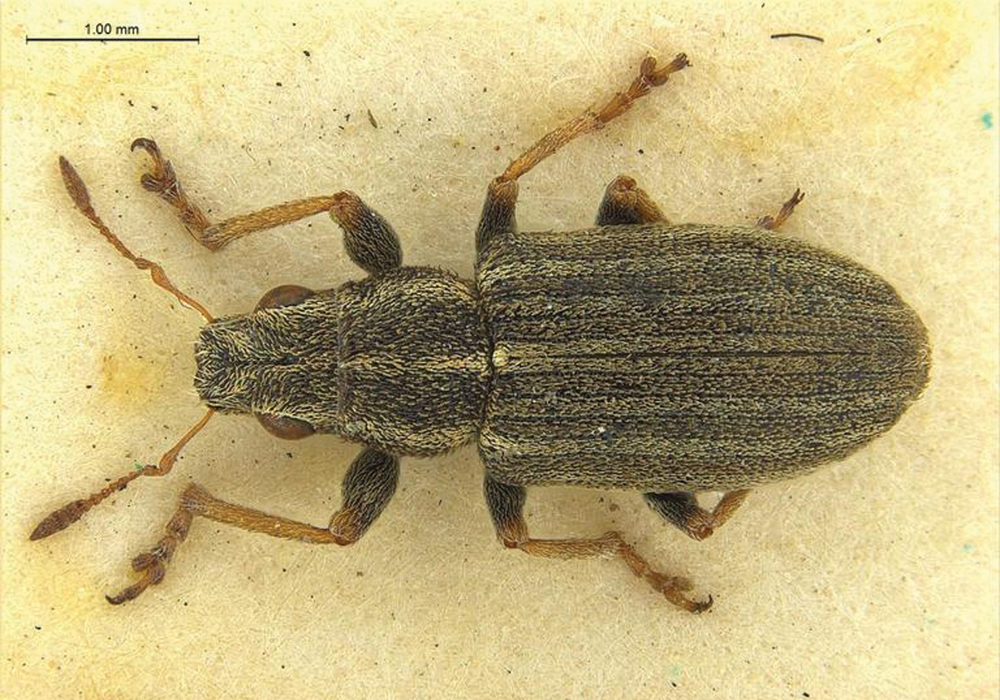As every farmer knows, insect pests of every kind and colour can — very literally — take a giant bite out of their crops. Limiting insect damage depends on timely control. That said, jumping too quickly to insecticides carries financial and long-term sustainability consequences. The key to good pest control is “all in the details,” says Dan Johnson, vice-president of the Entomological Society of Alberta and a professor of data analysis, environmental science and biogeography at the University of Lethbridge.
Proper identification
Johnson says there are several critical factors to consider when insect sampling. First, farmers need to carefully identify what is crawling through a crop field to assess whether it’s actually a problem or not. That’s not nearly as easy as it sounds. Consider, for example, grasshoppers. Alberta is home to about 100 different species of grasshopper. A single crop field is often home to 10 or 15 different species of grasshopper — and a single forage grass field could easily host 30 species.
Read Also

Claas brings 1000 Series SP forage harvesters to Canada
In mid-August, Claas unveiled its new line of Jaguar forage harvesters at an event in Visalia, California, deep in the heart of that state’s dairy region.
Usually, only maybe two of the many species in any given field will be problematic, crop-consuming pests, which makes identification critical. Other times, however, a single species can explode in numbers. For example, last summer Johnson sampled fields west of Lethbridge and in southern Alberta’s Foremost and Carmangay areas where nearly 100 per cent of the grasshoppers present were major pest species.
“There’s such diversity. It sometimes happens you have a lot of grasshoppers, but they’re really not a problem. But on the other hand, reality sometimes belies that conclusion — sometimes you can have a lot of grasshoppers and they’re all the problem,” says Johnson.
- Is your insect management plan ‘snug as a bug’ this year?
- Grasshoppers and flea beetle key pests of 2021
Number certainty
The second critical factor for effective pest population sampling is finding certainty in your numbers. Certainty depends on understanding the difference between two sampling measurements — accuracy and precision. When sampling, accuracy is how close your count is to the actual value in a specific sample area. Accuracy is important, but it’s not enough on its own since even the most perfectly counted sample can’t correctly describe an insect pest’s spread across an entire field. To account for population variance, one also needs precision: the measurement of “how sure you are that you’re right,” says Johnson.
“The problem with insects is they’re often clumped together. That means taking just a few counts is not really very good because the (sample) spread is way too wide. For precision, you generally use repeated measurements. The challenge is how many (sampling locations) do we need to do, and how wide is that spread in the counting?”
There’s no simple answer to how many samples are required, as each pest’s spread is different. However, the more (samples) you take, the better off you are, says Johnson.

Know when and what to count
The third critical factor for effective pest counting — and one of the most difficult — is knowing when and what to count.
“We need to know more than just number and temperature and things like that. We need to know the details of the life cycles; we need to recognize the stages. And we need to know something about their relationships to other things, (which includes having) an understanding of their natural enemies. Those aren’t extraneous detail. You might think, ‘Gee, wouldn’t it be nice to know, but we don’t have time.’ No. Those aren’t beside the point — those are the point. They’re absolutely paramount,” says Johnson.
In New Zealand, insect surveys now account for beneficials as well as pest species. Johnson hopes the same may eventually be the case in Canada.
Just how important are beneficials? Extremely, says Johnson, pointing to potato psyllids as an example. Johnson was part of co-ordinating a multi-year potato psyllid survey across Alberta, then across Canada. Because Alberta doesn’t use a lot of insecticide on potato fields, the fields maintain naturally high populations of beneficials. The researchers found that reasonably high populations of potato psyllid were well controlled by healthy populations of natural enemies.
“There are dozens of (natural enemies) that attack little insects like aphids and psyllids. When a psyllid comes along and lands in the field in Alberta, it’s probably killed. That’s brilliant. That’s ecological services. Free pest control. If people could try to tell these (beneficials) apart and keep an eye out for them, maybe they’d be able to harness that a bit more and help keep (beneficials) working that way,” says Johnson.

There will be curveballs
The final challenge in insect counting is nature occasionally throws seemingly inexplicable curveballs. Bruner’s spur-throated grasshopper, a major new pest in Alberta’s Peace region, is a case in point. Johnson collected samples of the grasshopper from various regions in Alberta — the Peace River region and Cold Lake in the north and Cypress Hills in the south. Collaborators sent him samples of the same species from both Wyoming and Vanderhoof, B.C. Johnson extracted DNA from all of the samples and says he was shocked to find that each region’s samples had very different DNA.
“Even when you have the same species, you can have totally different creatures in different parts of the country. We almost have to study at a local level in order to know what’s going on,” says Johnson.
That same grasshopper has another trick up its sleeve. Grasshopper forecasting is done by predicting spring egg hatch numbers based on the previous August’s adult counts. Yet, in the Peace River region, Bruner’s spur-throated grasshoppers have transitioned to a two-year cycle, says Johnson. “The population goes up, down, up down. That means the forecast is always wrong. Always.”
More recommendations
Johnson has several final recommendations. First keep a careful eye on government pest forecasting maps, which provide a good idea of what to watch for in your fields.
Next, scout. “Even if, maybe, you don’t feel you need to, scout anyway,” he says.
When you find insects in your crop, collect samples and keep good records. “Take photos with a (smartphone). Collect specimens in a bottle of alcohol. The number of times people call with questions but don’t have a sample? It happens all the time.”
And, finally, if you’re not sure what you’re dealing with, find help.
“Farmers know what they’re doing. They’re good at their jobs. I think they usually think, ‘I don’t want to bother (researchers and entomology experts) and make them identify my sample.’ But the thing is, people like me would like to, absolutely.”















